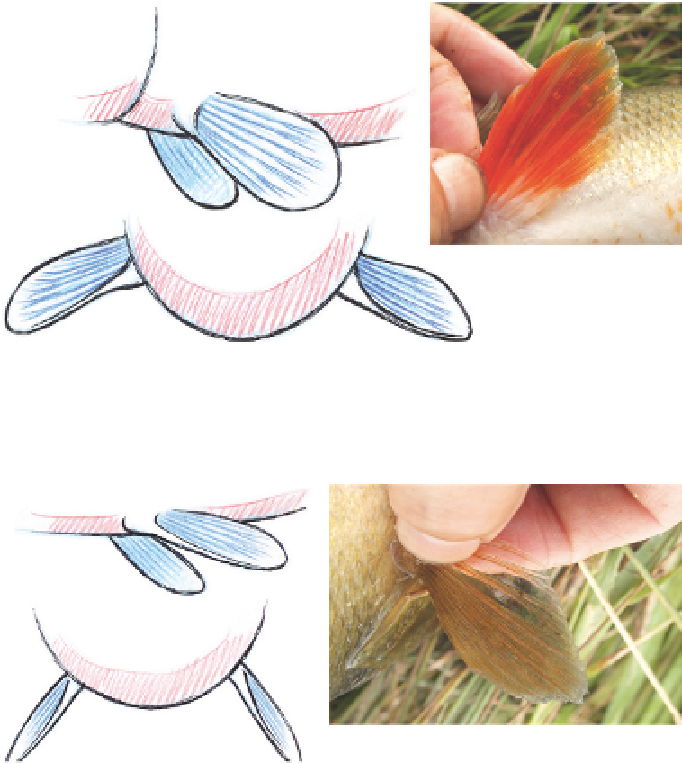Graphics Reference
In-Depth Information
describes a caudal in that has a slightly inward curve, as in the European perch
Perca fluviatilis.
. Lunate caudal fins are highly curved and form a crescent shape,
as in the albacore
Thunnus alalunga
and the wahoo
Acanthocybium solanderi
.
Members of the
Scombidae
family, which include tuna, albacore, wahoo, and
mackerel, have very slender caudal peduncles and sickle-shaped tails. The
mass of myotomal muscle transmitting power to a huge tail through the
tendons in slender caudal peduncle enables high-speed tail beats, making
these fish capable of sustained swimming with occasional bursts of very high
speeds of up to 64 mph.
The Pectoral Fins
Pectoral fins are paired fins that are located on either side of the fish, just behind
the gill cover or operculum. These fins are capable of generating dynamic lift.
In sharks these are rigid and assist in maintaining depth. In some fish these
fins are modified to support their bodies and assist them in “walking” along
the bottom. Many fish have spines on the pectoral fins that provide protection
from predators. Mud skippers use their pectoral fins rather like arms to drag
themselves across the soft mud on which they spend much of their lives.
FIG 4.75
Pectoral fins provide
propulsion at low speeds, maneuver-
ability, and stability.
The Pelvic Fins
The pelvic fins are also paired fins, sometimes known as ventral fins, that are
located on the underside of the fish, behind the pectoral fins and in front of
FIG 4.76
Pelvic fins provide the fish
with stability.


